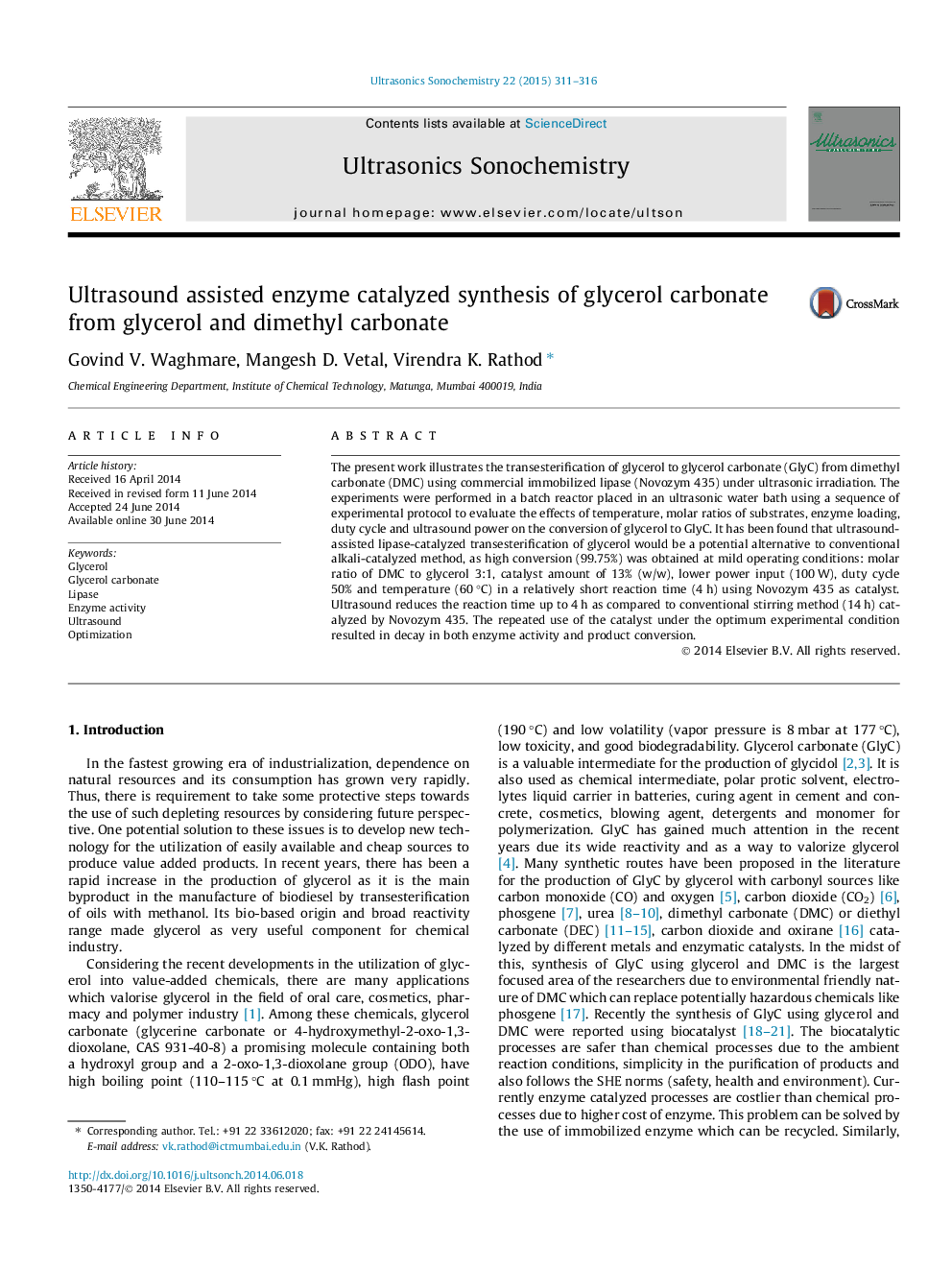| Article ID | Journal | Published Year | Pages | File Type |
|---|---|---|---|---|
| 1269651 | Ultrasonics Sonochemistry | 2015 | 6 Pages |
•Immobilized lipase catalyzed transesterification of glycerol with dimethyl carbonate.•Process parameters for synthesis of glycerol carbonate were optimized.•Ultrasonic irradiation used to intensify the process.•Significant time reduction using ultrasonic irradiation.
The present work illustrates the transesterification of glycerol to glycerol carbonate (GlyC) from dimethyl carbonate (DMC) using commercial immobilized lipase (Novozym 435) under ultrasonic irradiation. The experiments were performed in a batch reactor placed in an ultrasonic water bath using a sequence of experimental protocol to evaluate the effects of temperature, molar ratios of substrates, enzyme loading, duty cycle and ultrasound power on the conversion of glycerol to GlyC. It has been found that ultrasound-assisted lipase-catalyzed transesterification of glycerol would be a potential alternative to conventional alkali-catalyzed method, as high conversion (99.75%) was obtained at mild operating conditions: molar ratio of DMC to glycerol 3:1, catalyst amount of 13% (w/w), lower power input (100 W), duty cycle 50% and temperature (60 °C) in a relatively short reaction time (4 h) using Novozym 435 as catalyst. Ultrasound reduces the reaction time up to 4 h as compared to conventional stirring method (14 h) catalyzed by Novozym 435. The repeated use of the catalyst under the optimum experimental condition resulted in decay in both enzyme activity and product conversion.
